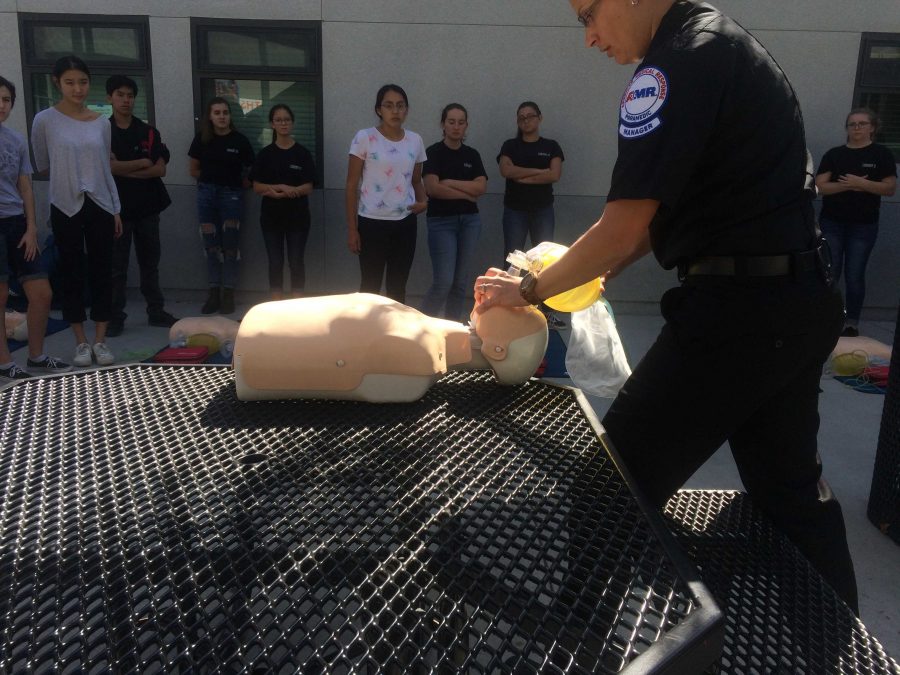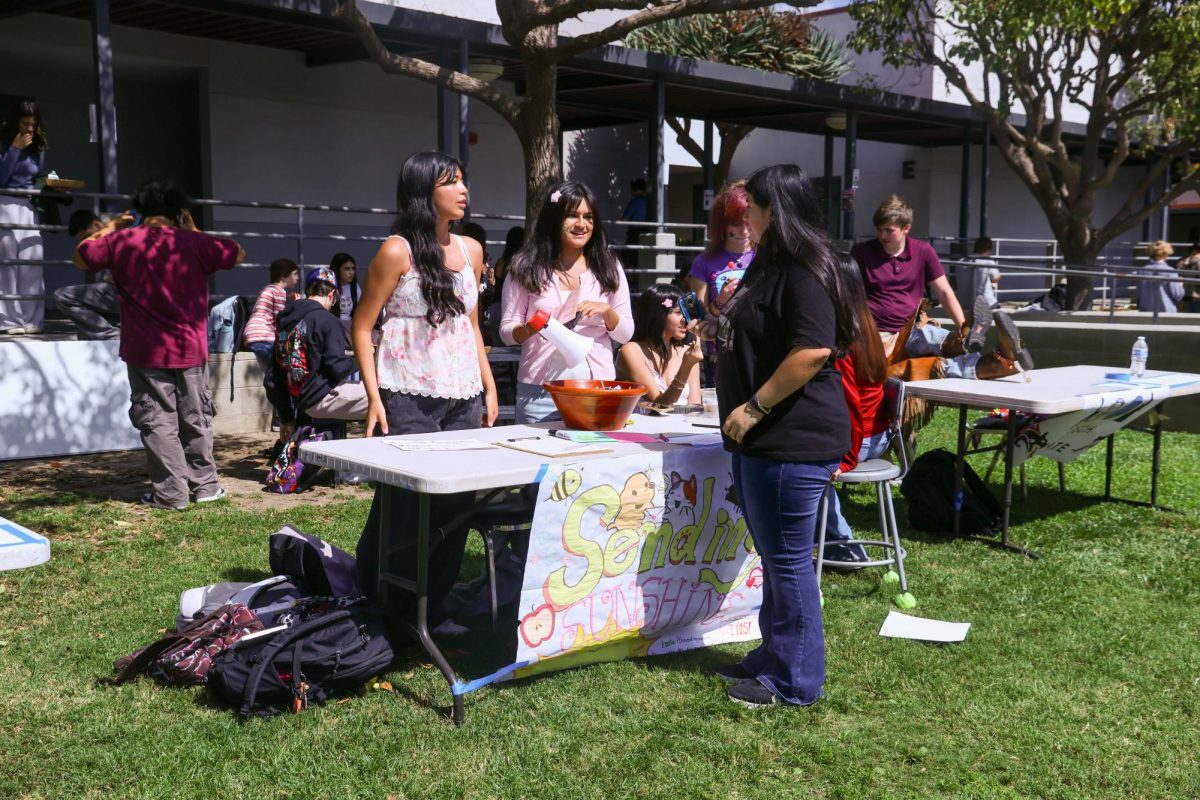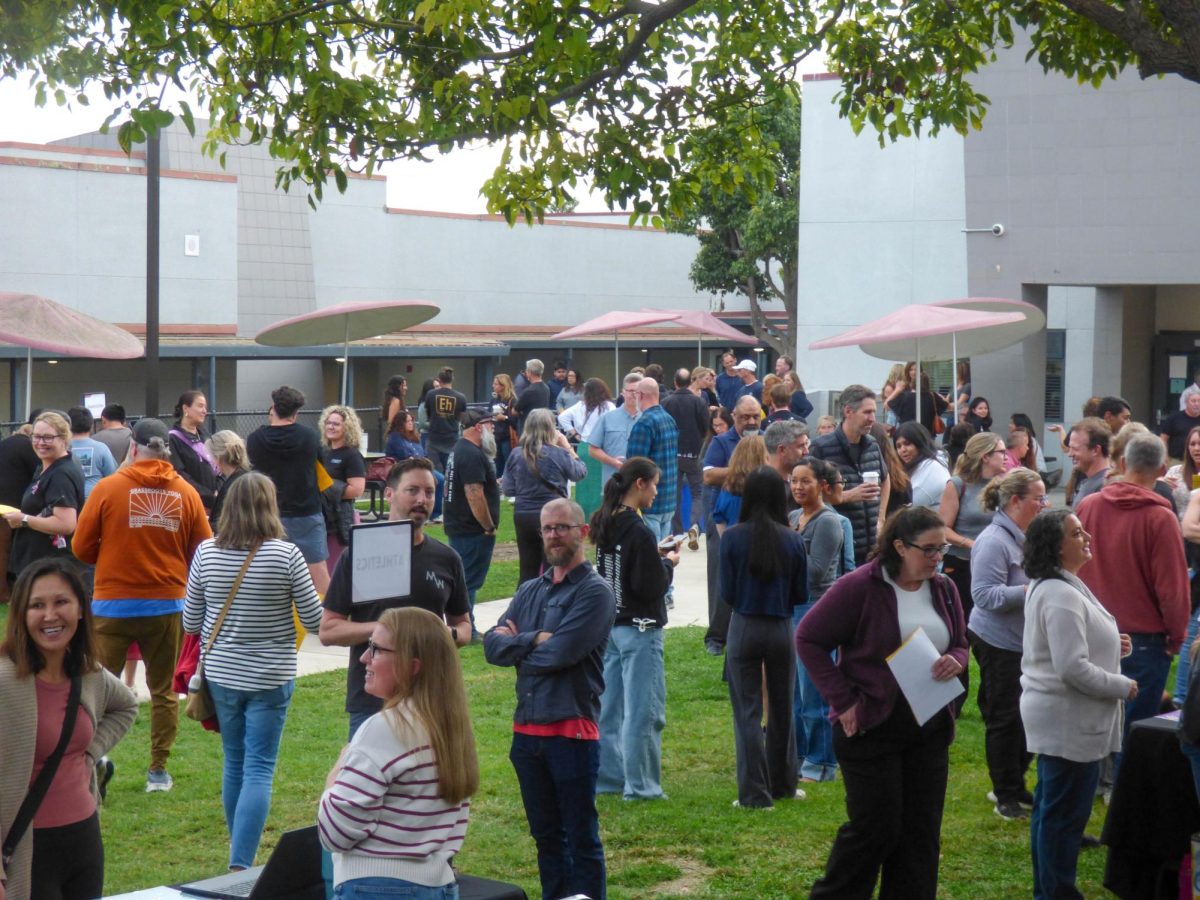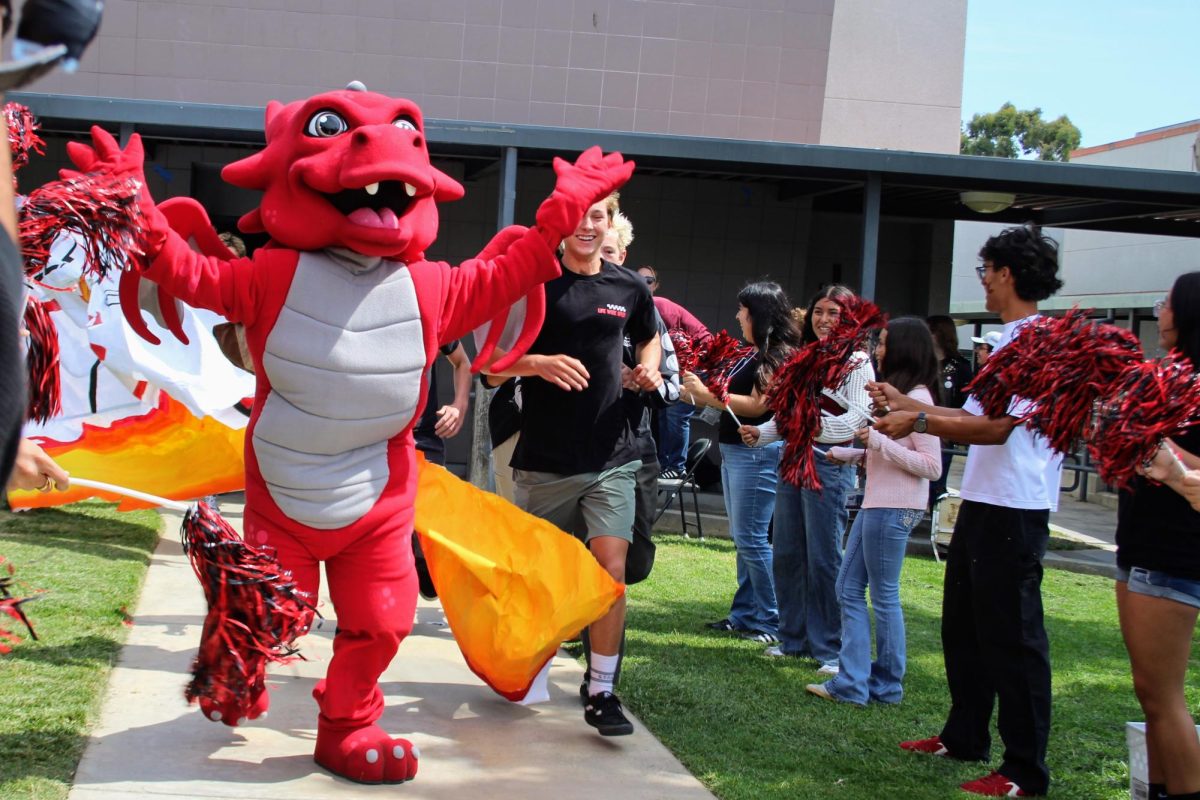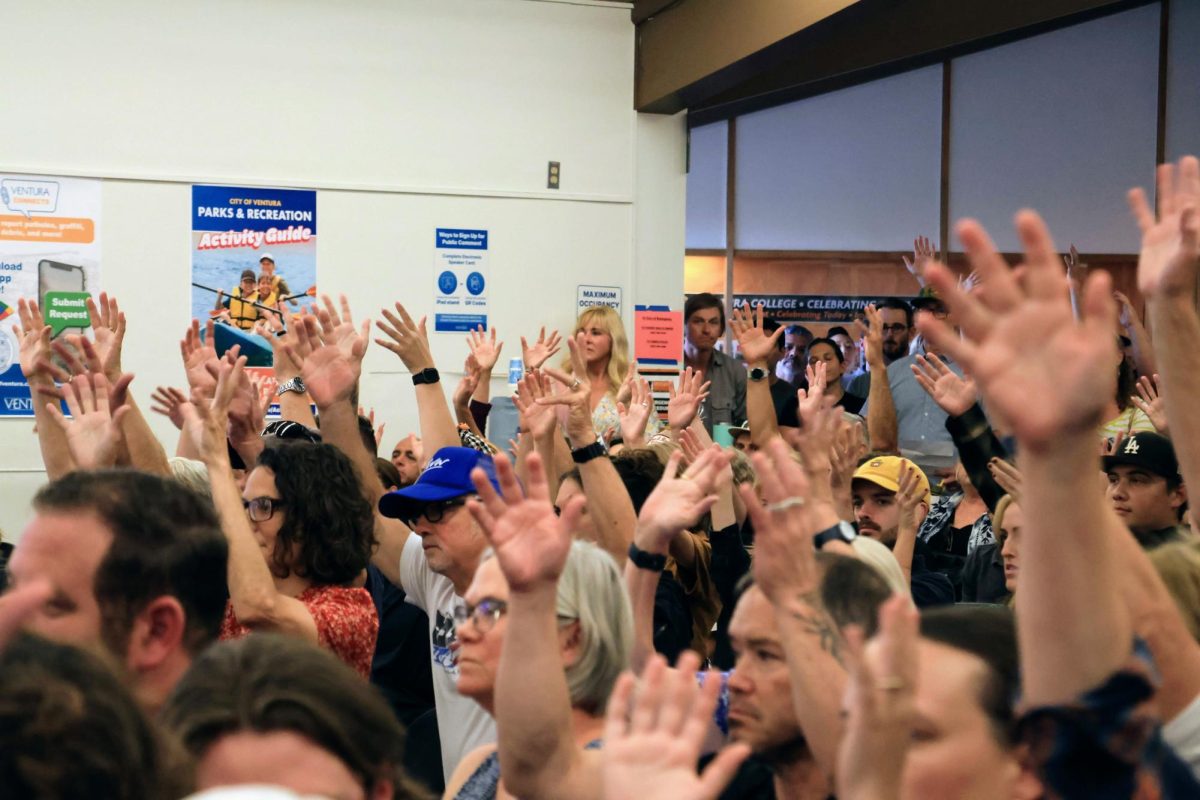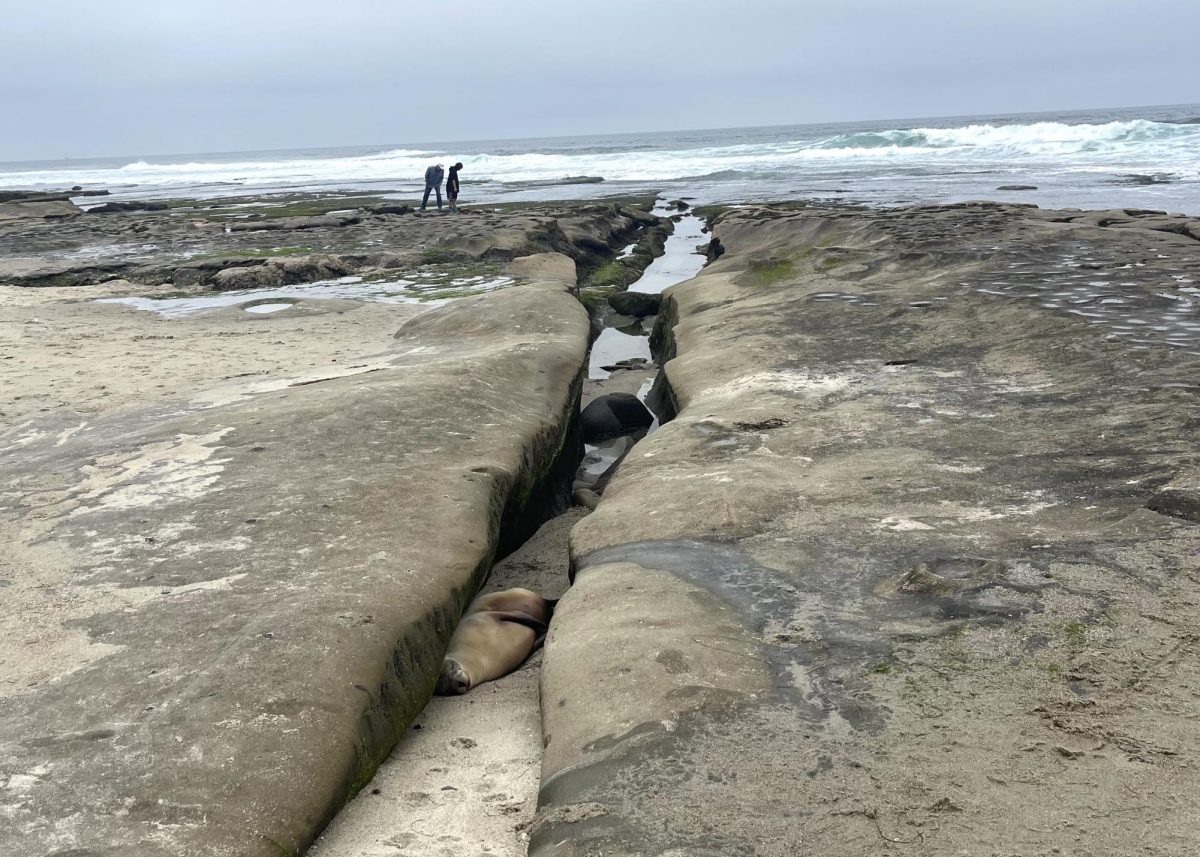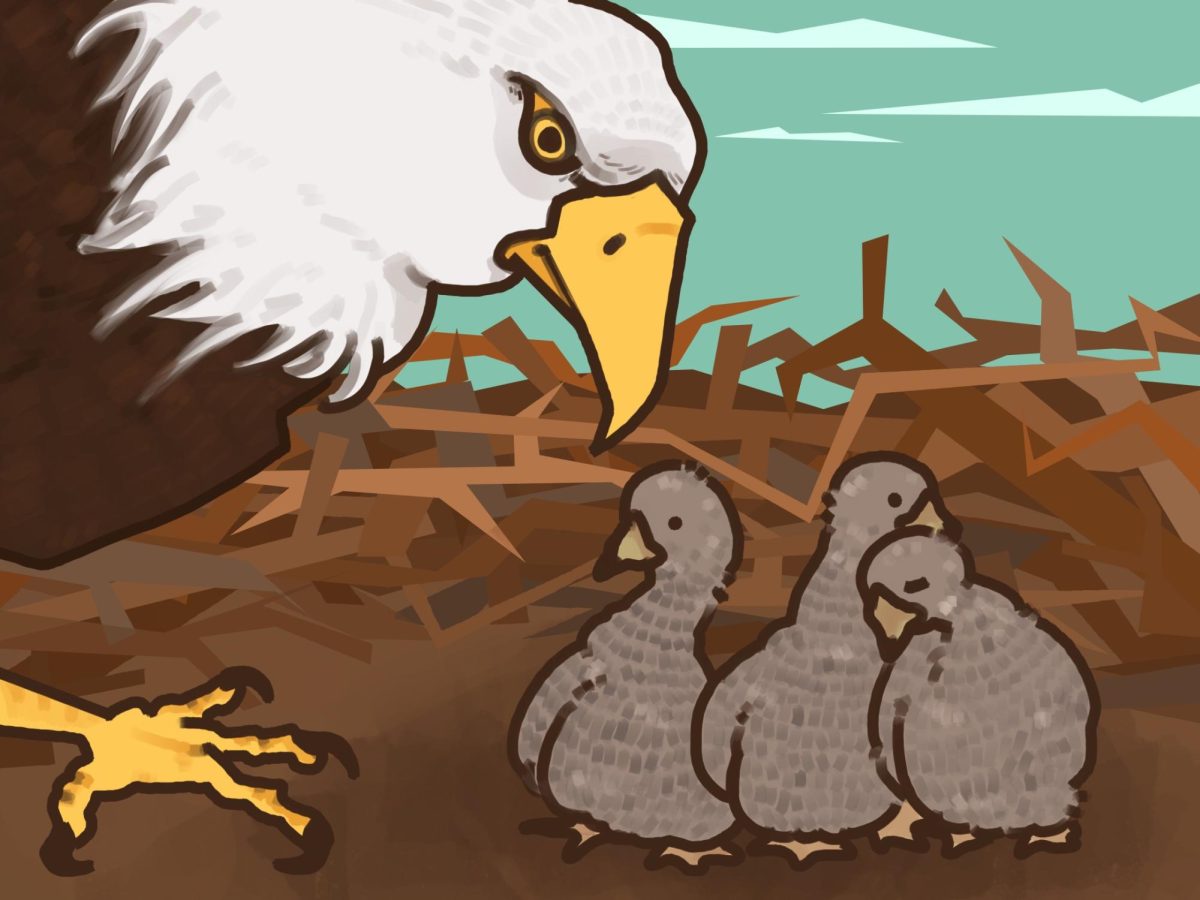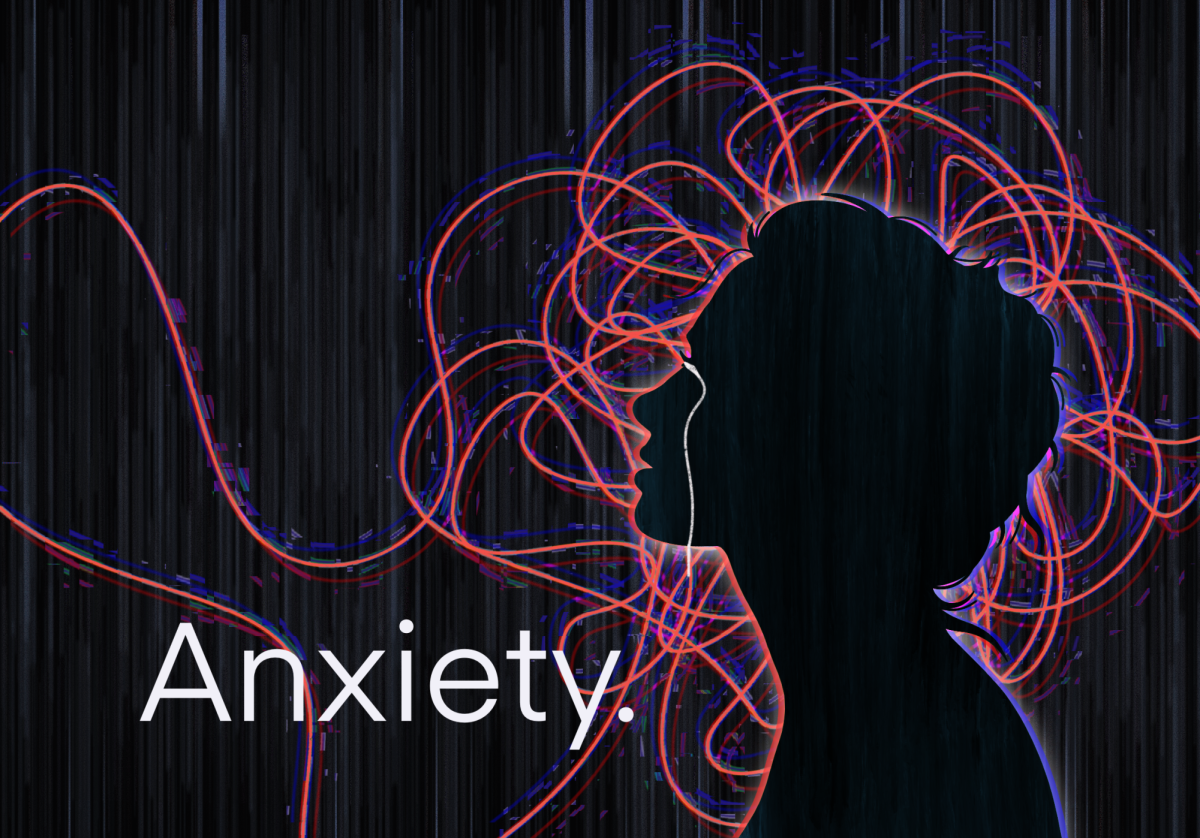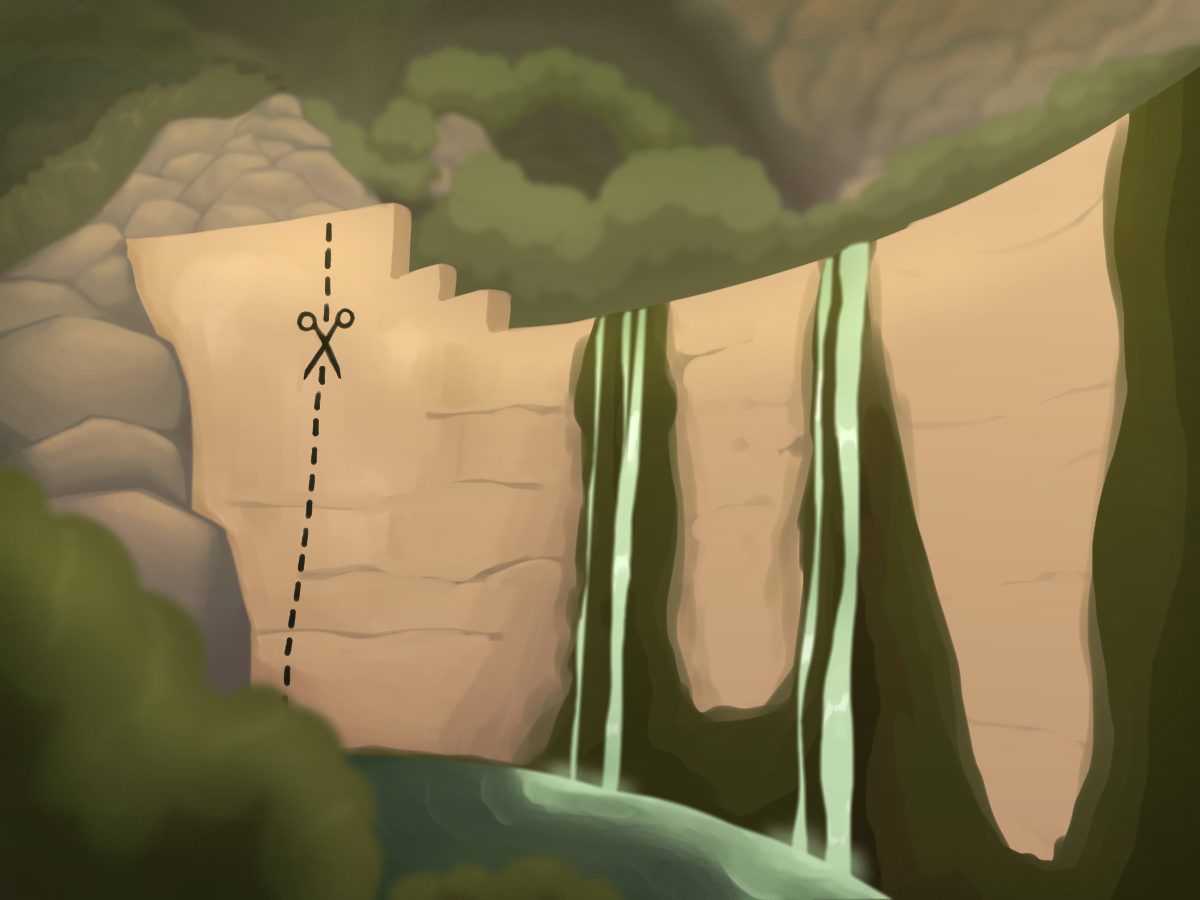For over 50 years, scientists have been challenging studies to help people become safer and healthier, which led to the development of the American Medical Response (AMR) team. Ventura County’s AMR paramedics came on Friday Oct. 13 to educate MedTech and Bioscience about the science behind CPR and medical trauma, as well as how to deal with critical situations.
You could tell the MedTech students were brimming with excitement at the idea of professionals investing in them and providing a glimpse of their reality. They listened attentively during a presentation by Adriene Stefansen who has been a paramedic for 11 years and is now the clinical manager of AMR. John Butchan was also with her and has been working in the field for 13 years in Santa Paula.

The pair walked through some of the historical aspects of medical advancements and the evolution of AMR. Then, the class split into two groups, one of which would be practicing hands only CPR, while the other studied medical trauma.
Paramedics must always be prepared to handle any situation at any time, and therefore must know how to provide CPR and AED properly.
“We’re primarily on 24 hour shifts, so our shifts start at 7 a.m. and then go until 7 a.m. the next day,” Stefansen said. “Usually that rounds out to 10 days a month.”
Stefansen led the CPR instruction course, and she emphasized that besides being able to provide the best care possible, the most strenuous parts of the job of a paramedic is the fact that paramedics are “human, and [have] human responses to people.”
“It’s hard to watch people go through that process and be in pain,” Stefansen stated. “You never know what types of calls you’re going to get and when they’re going to start coming through. […] It’s never the same thing everyday.”
Once they had a full session of using a metronome to stay on beat with the song “Stayin’ Alive,” or had cut off one another’s circulation with a tourniquet, they switched stations.
Overall, the Bioscience students had a hands-on experience that provided them with a lot of new insight, but also raised questions about the AMR system. How does CPR and trauma treatment help a patient? What is the mechanism behind their success?
The tabs below walk through the step by step procedure, and how these processes really work.
Many people know of cardiopulmonary resuscitation (CPR) and that it’s a staple of immediate medical care in an emergency, but few actually know what is happening to the victim during the process.
Throughout cardiac arrest, the heart is shaking in such a way that stops the flow of blood, therefore cutting off oxygen supply to the brain and other organs. The Automated External Defibrillator (AED) delivers an electric shock to try and calm the heart, so it will stop vibrating.
During hands-only combustion, a lot of pressure needs to be applied to the chest in order to help the blood start flowing again. Because of this, paramedics must respond quickly. Once the victim has gone into cardiac arrest, they have 46 fleeting minutes before any excess oxygen stored in their blood cells is used up.
Below are steps to how CPR should be done in case it is necessary:
- Establish who needs compressions and make sure they are going through cardiac arrest.
- Tell someone to call 911 and get an AED.
- Place hands on the center of the chest and the middle of the sternum, and press into the chest about 2-2.4 inches at a rate of 100-120 beats per minute.
- After 2 minutes if someone is available you can switch off, but if not continue compressions until AMR arrives with more assistance.
A problem Butchan and Stefanson say that an issue most people face in a medical crisis is feeling like they are going to react in the wrong way, making them apprehensive to save a life. This is most commonly due to the fact that many people do not know what to do in the case of an emergency.
If you ever encounter a scenario where it is necessary to stabilize a victim, below are some instructions on how to deal with the situation until someone of higher level arrives.
What to do in the case of an accident:
- Make sure the scene is safe before proceeding.
- Approach the patient and ask him or her for permission to assist while someone else calls 911.
- Put on personal protective equipment if it is present.
- Establish where the victim is feeling pain. Check for excessive bleeding and leak of fluids.
- Stabilize their neck by holding with four fingers under the jaw and with the thumb above the ear. Do not let go of the neck at any point.
- Have the patient squeeze the fingers of another individual, if others are present at the scene. If you are alone, then ask the victim to move his or her fingers and note whether there are any abnormalities. Failure to move may indicate loss of sensation, which may correspond to brain damage.
- If a backboard is present, the first responder who is holding the neck will help clarify movements to help get the victim onto the backboard. If it is not present, keep the neck of the patient stable until paramedics arrive.Secure the head, feet and hips to make sure the victim doesn’t slide around on the backboard.
- While you wait for someone of a higher medical qualification to arrive, reassess the patient to make sure there are no new injuries and to note increase or decrease of pulse rate, breaths, pain and sensation.
The first responder will give instructions to get patient into the ambulance if it is necessary.


